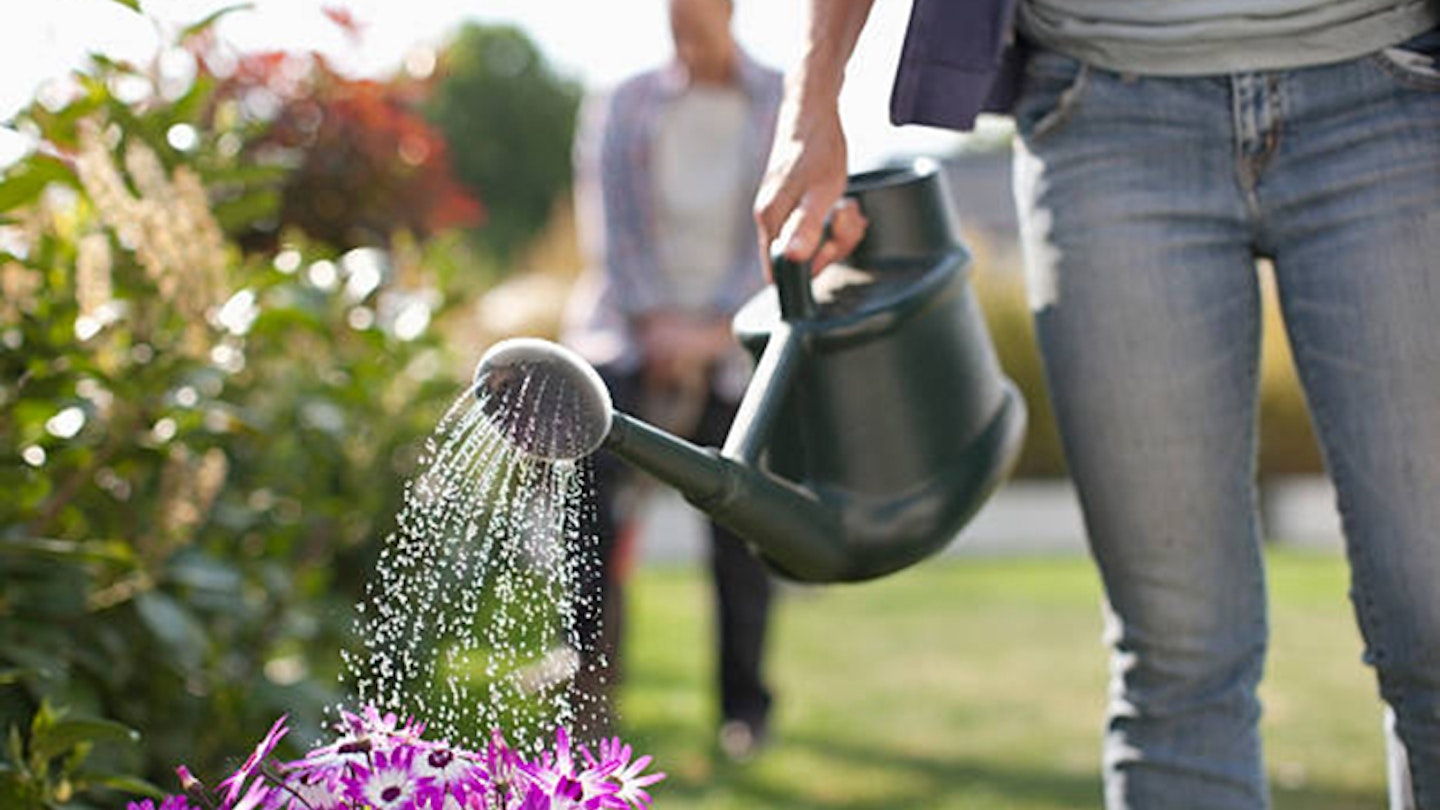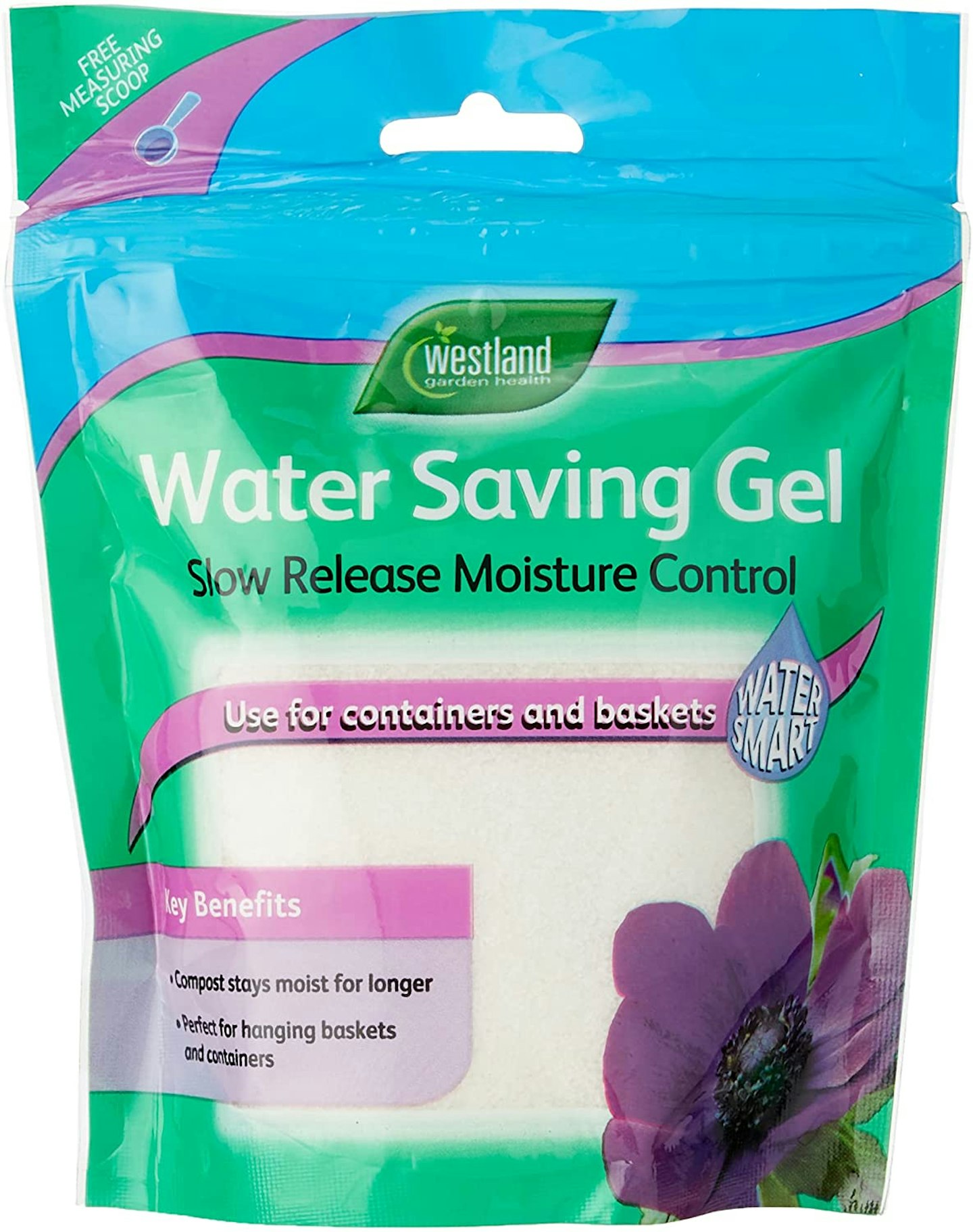Whether you’re trying to prevent your lawn becoming an arid desert, or want to keep your prized perennials healthy, saving water in your garden can save you money.
There’s no getting away from the fact that maintaining your garden can take up a lot of H2O, especially in the summer months. But watering your garden in a more environmentally friendly way will not only reduce the toll on this precious resource, but can also cut how much watering you have to do, saving you time and money.
According to the world economic forum, water scarcity is one of the five most critical global risks and already affects a quarter of the world’s population. While we may feel like we get plenty of rain in the UK, with global warming this is decreasing every year.
Saving water in the garden helps us live more sustainably to protect our planet, with the added benefit of cutting your house bills. Using the tips below will help you cut down your carbon footprint and better manage your garden.
12 ways to save water in your garden
1 When to water
It’s all in the timing - water in the early hours of the morning to reduce evaporation. The water will sink deeper into the soil and keep your thirsty plant happy for the whole day. Plus this will encourage root growth beneath the surface. If you water in the midday heat you run the risk of scorching your plants and damaging them.
2 Use rainwater
Did you know the average roof collects 85,000 litres of water a year – enough to fill 450 water butts.
Water butts come in all shapes and sizes, big and small, or you could even make your own. Collecting run-off from your roof or even the top of your shed all provide a great source of water that can be stored for use whenever you need it.
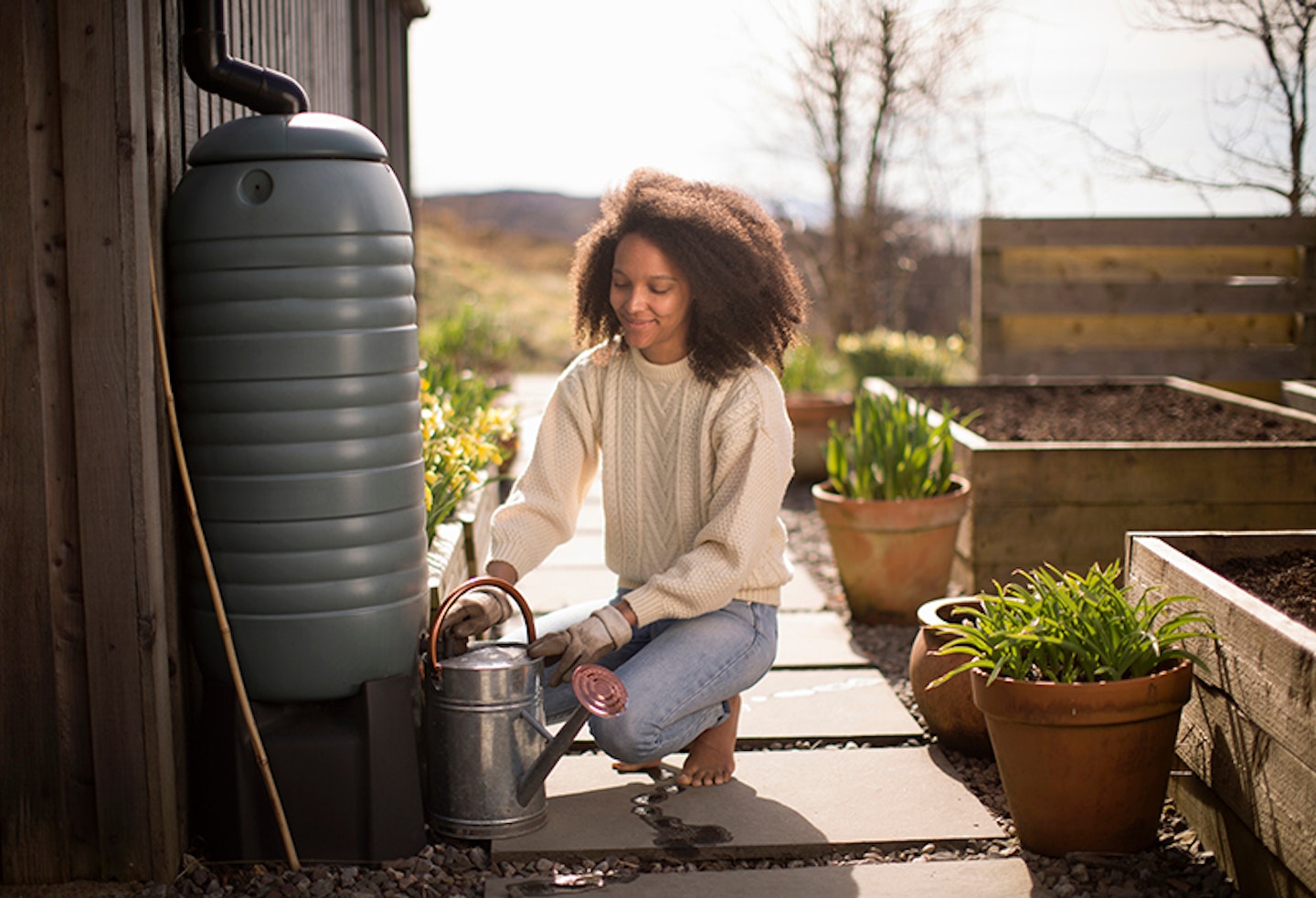
Rainwater is also better for plants than tap water as it often has a lower pH. The minerals that are sometimes found in mains water, especially in hard water areas can raise the pH of your root zone, which can affect the nutrient availability. According to the RHS Rainwater is especially good for ericacious plants such as azaleas.
**3 Recycle water
**Think of all the water we tip away down the drain, whether from washing-up or even bathwater. But this domestic wastewater, or grey water, may also be used in the garden.
Gardening guru Alan Titchmarsh recommends this too, “ It’s not all that difficult to do, once you get into the habit. For a start, use a plastic bowl for all of your rinsing and washing-up, so you can tip it on the garden afterwards."
Washing-up liquid or ordinary soap won’t do any harm to your garden, even to young plants or seedlings, but leave very dirty or greasy water for the more rugged plants such as trees and shrubs, and don’t re-use water containing bleach or cleaning products. You can also get greywater systems installed which collect waste water from your house and store it, providing a source for irrigation.
4 Let your lawn grow longer
Admittedly the British weather can be unpredictable, but if you are expecting an impending heatwave, hold off on cutting the lawn. By giving your lawn mower a rest and allowing the grass to grow slightly longer than usual grass stays a lot greener in dry conditions.
Reducing the amount of weeding you do can also keep your lawn looking healthier as drought-resistant clovers and trefoils don’t turn yellow when they are short of water.
5 Water-conscious planting
Just because you want to be water conscious doesn’t mean you need to scrimp on your planting, just stick to native species or look for drought-tolerant varieties that will look good all year round with little assistance from you.
You could create a meadow-style garden with drought-tolerant perennials and ornamental grasses, or a Mediterranean garden of evergreen herbs and aromatics.
6 Be clever with garden drainage
By removing portions of your grass and installing gravel instead, you can save water. This is because water drains more quickly through permeable surfaces such as gravel, reducing the amount that sits on the surface and gets evaporated.
Using gravel rather than pavers is also a good way to create better drainage within your garden, meaning less watering.
**7 Reduce soil evaporation
**In the same way using gravel can improve drainage, mulching using leaf mulch, pine bark, shredded hardwood bark, and grass cuttings also helps reduce soil evaporation.
Adding this extra layer to your flower beds and pots is a great way to cut down on water loss, while at the same time reducing weed populations, and enriching the soil. Weeding also removes those unwanted and invasive plants that would otherwise soak up the soils moisture competing with your plants and veggies.
8 The bigger the better
Bigger plant pots means more water can be stored. They also provide roots with more space to grow and absorb water and nutrients. The smaller the pot, the more diligent you need to be monitoring soil moisture levels.
9 Fake it
Of course another eco-friendly way of watering your garden is to simply not have a water thirsty lawn to water in the first place. This may sound crazy to some, but having artificial grass instead of real grass means you do not need to water it. The lawn may not be real grass, but modern day artificial turf can look and feel very real, plus there is no mowing either.
10 Plant trees
Using canopy trees in your garden will provide extra shade for your plants and lawn, keeping the soil cooler. They will help draw water down into the soil, plus help keep the soil itself healthier.
11 Get your priorities right
Remember, not everything needs watering, so in dry spells prioritise water use, recycled or not. Check if your garden really needs watering. Test the soil first, checking moisture levels. If it’s not dry, don’t water it!
Alan Titchmarch says, “Top of the list come young plants, anything in the greenhouse and outdoor tubs, hanging baskets and window boxes. Next it’s veg, salads and bedding plants, followed by recently planted perennials, shrubs and trees.
“Established trees, shrubs, lawns and hedges can be left to take their chances. If you start watering, you’ll have to continue, since new roots will make their way to the surface where it’s dampest, so the plants will suffer even more if you suddenly stop. Start as you mean to go on and teach them self-reliance.”
12 Gadgets for eco-friendly watering
There are lots of things you can find online or at your local garden centre that will help reduce the amount of watering you have to do in your garden, whether by improving the permeability of the soil or creating mini reservoirs for your pots.
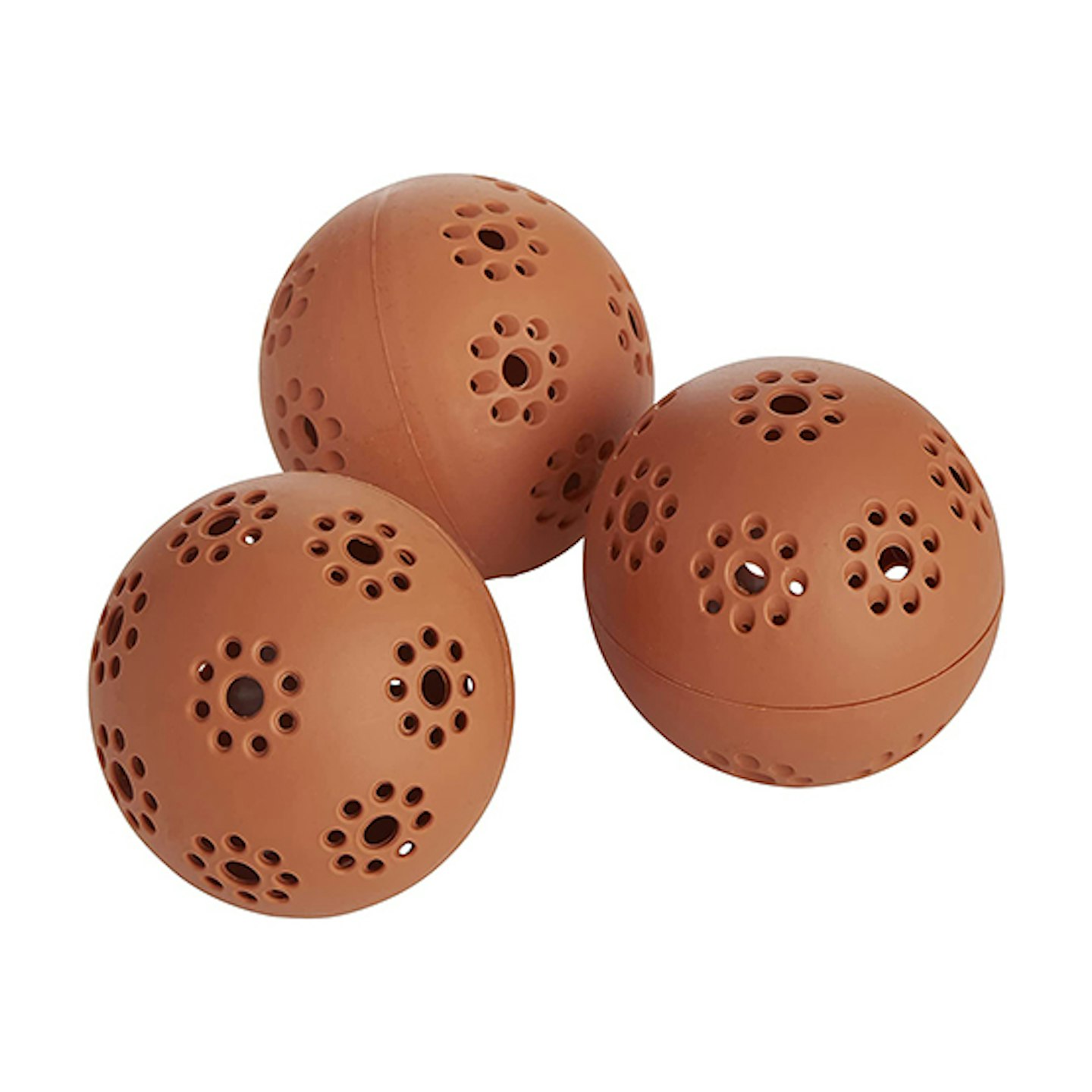
www.wilko.com
These clever Hydroballs work in two ways to help your plants stay healthy. When placed inside the included waterproof liners, they'll create a regular water source by acting as a reservoir for plants. Without the waterproof liner they help aid drainage and aeration. The hollow balls work with any pot size or shape, helping to keep your plants looking lusher for longer, and reducing the amount you have to water them. Price is for a pack of 16.
Review: "This simple idea has brought my plants to life and they are looking better than ever. I can leave my plants for days without watering them in the knowledge that they won’t die."
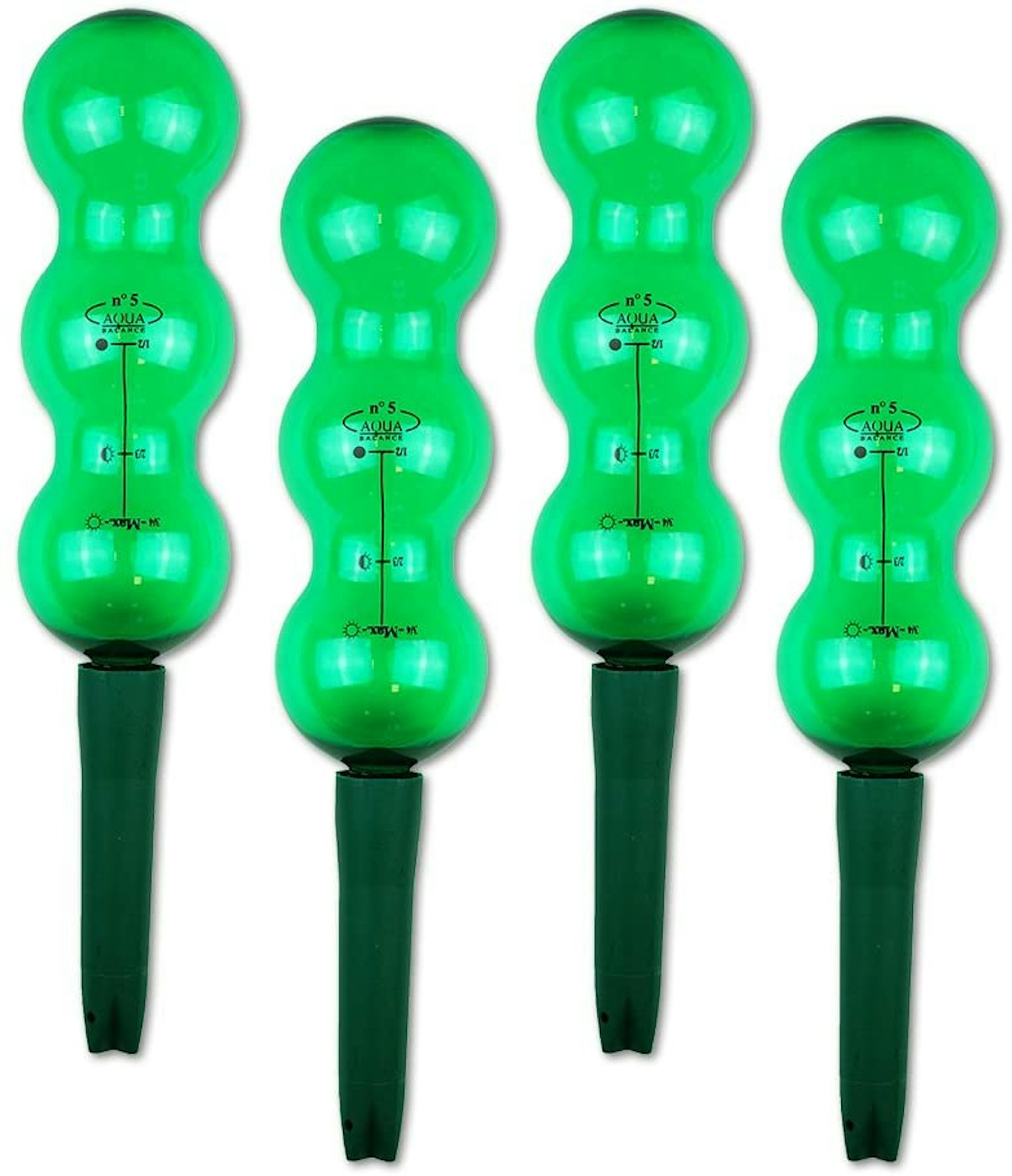
These self-watering spikes and globes are for indoor and outdoor plants. Water will last 2-5 weeks indoors, 2-3 weeks outdoors in semi shade, and 2 weeks outdoors in full sun (based on 2 litres). The water flow is controlled by temperature - the warmer the weather, the faster It drips - the cooler the weather, the slower it drips - so your plants get perfectly watered straight to the roots.
Review: "It's saving my greenhouse plants a lot of stress as it sits in direct sunlight. As they are set up in a hot place they do empty quite quickly but they did last the week while I was away and still had a small amount left in them when I got back. Once the spike is in position you just take the bottle out and fill it with water (I use mine with liquid plant food also) and then pop it back into the spike so the roots are never disturbed by removing the spike in and out of the soil. I would definitely recommend this product."
Westland Water Saving Gel is an advanced water holding system that has the capacity to hold 400 times its own weight in water. Water is absorbed and released as the plant needs it. Reduces water stress in plants and helps to retain flowers and fruit during hot weather and rapid plant growth. One application lasts all season long. Can be used in pots, containers and hanging baskets.
Review: "I had major issues with watering last year and having decided to use vertical gardens and grow hanging baskets for my veg, salads and fruit. This seems to be the only water saving system that is allowed to be used for food production, with no nasty chemicals. So far it has been great, you don't need much at all and it's used dry mixed in, and then watered after planting. Very easy to use."
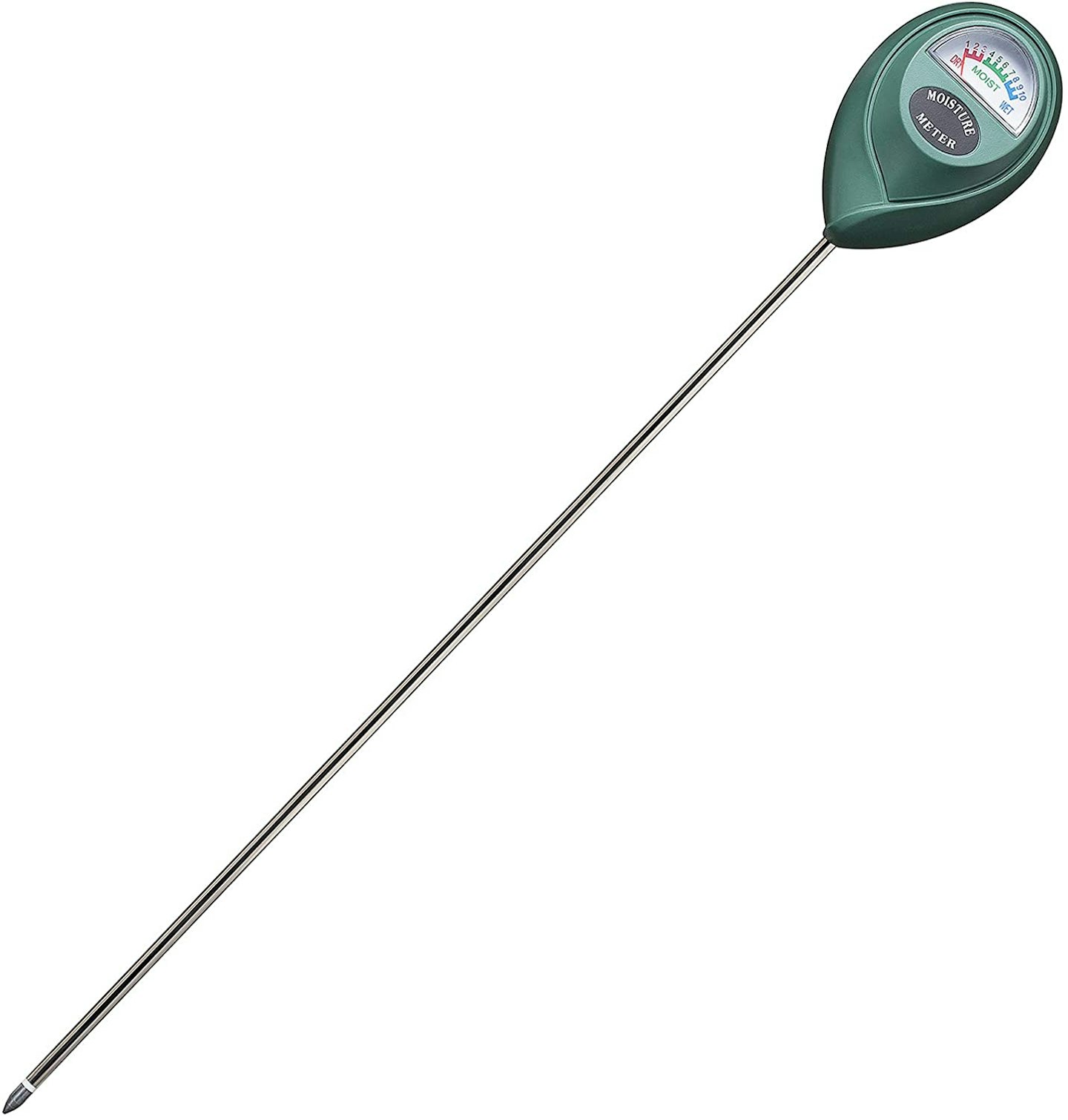
This Long Moisture Meter tells you instantly whether your plants need water. With this meter, you will know that sometimes though the top of the soil looks dry, just beneath the surface it's damp enough to skip a watering.
Just stick it in the dirt and the dial instantly tells you whether the soil is dry, moist or wet.
Review: "This is a simple to use product that we use for measuring the amount of water in pots with plants. It seems accurate enough to avoid dryness or over-watering. Well worth the money and worth buying more than one if, like us, you have lots of pots."
